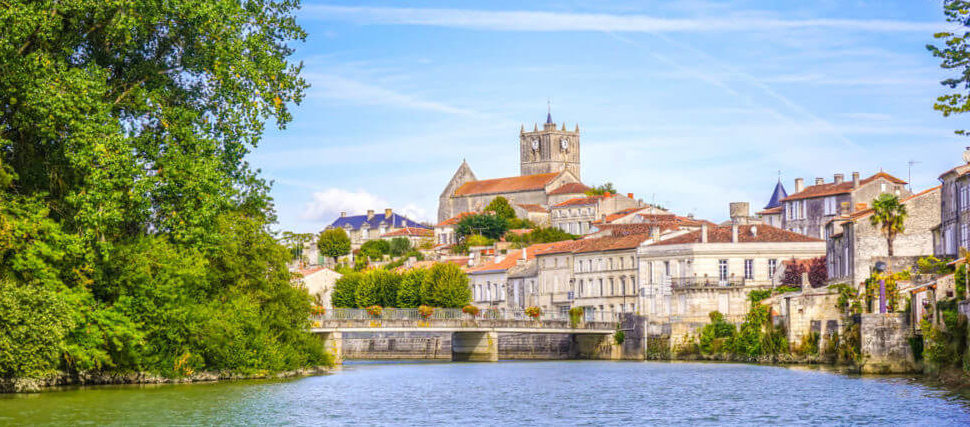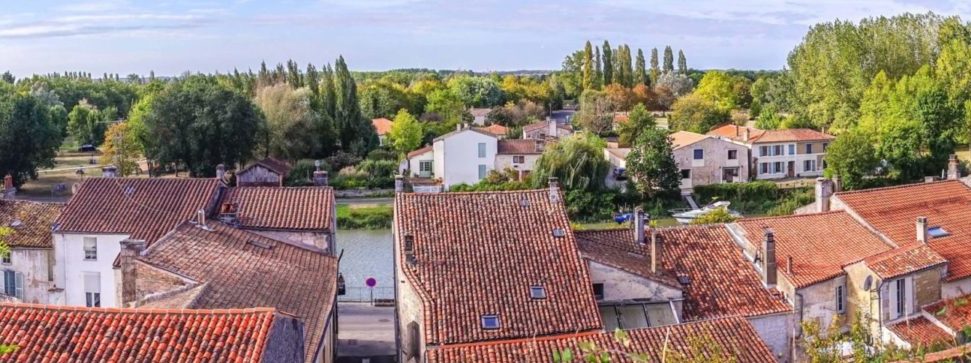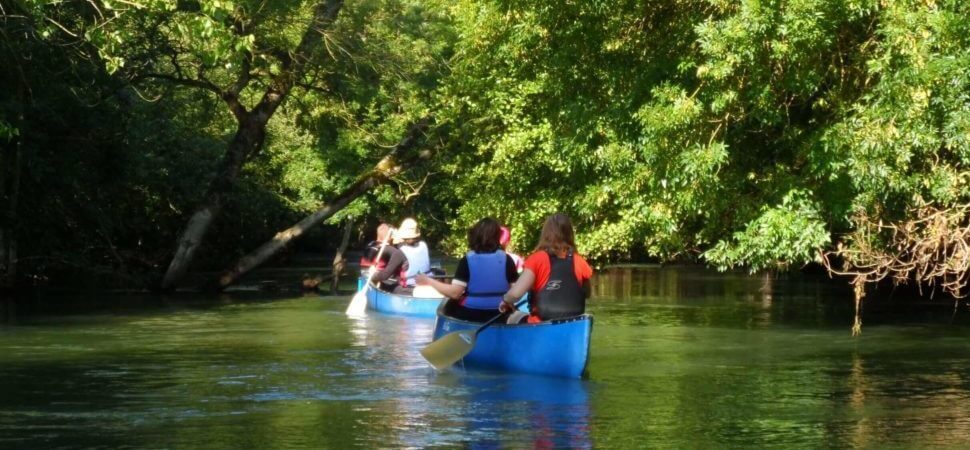Vals de Saintonge gained its name from the valleys that shape the verdant landscape and wetlands.
Soft limestone, quarried below ground, was used for the construction and sublime decoration of masterpieces such as the church of Saint-Pierre at Aulnay-de-Saintonge but subject to erosion by the watercourses deepening the ground around their bed. The resultant valleys are home to the Charente, the Boutonne and the Trézence. Follow the blue course of these biological corridors where natural and historic richness abound.
The Charente valley, perfect for river tourism
François I considered the delightful Charente as the “most beautiful stream of the kingdom”. In the past, the Charente was the main means of transport of goods and many towns were built along its banks.
Saint-Savinien-sur-Charente, a “Village of stone and water” and a “Small characterful town” is a perfect example of this rich history when flat-bottomed boats (gabares) transported wood, wine and dressed stone from the nearby quarries. The quaysides add to the charm of the town and in summer, guided visits are available.

Another quarry near Port d’Envaux is also worth a visit. At the “Lapidiales” site, artists from all over the world come to sculpt huge blocks of limestone. Nowadays, stone is no longer transported on the Charente, commercial navigation having given way to tourism.
There’s nothing more enjoyable than renting a no-licence houseboat at Port d’Envaux and to follow the sinuous, tranquil course of the Charente.
If your children fancy being a fresh water captain of a boat, cross the île de la Grenouillette to “Port miniature” in Saint-Savinien where they can sail marvellous boats built to accommodate a child: small boats but loads of fun guaranteed!

The Boutonne valley, a good place for walks, bike rides or canoeing
La Boutonne
The Charente merges with its longest right bank tributary, the Boutonne, at Carillon. More than 30km of rather twisting waterway, surrounded by a number of marshes, lead you to Saint-Jean-d’Angély.
From the Middle Ages, this section of the Boutonne was developed for the transport of goods from Saint-Jean-d’Angély to Rochefort, reaching its apogee in the 19th century, chiefly with the cognac trade.
Le Quai de Bernouët
The Quai de Bernouët was then one of the town’s main ports. Today it’s a pleasant way of walking to the water sports centre. On the spot, the more adventurous and sporty can hire a kayak to descend the Boutonne as far as Torxé or even Tonnay-Boutonne.
The water course was also used in the past as a means of energy for watermills where wheat was ground or to make gunpowder by grinding charcoal, sulphur and saltpetre. The mill at Faubourg de Taillebourg (the big wheel can still be seen) manufactured gunpowder in the 19th century sent as far as the French territories in North America. .
Saint-Jean d’Angély
Traces of the prosperous commercial past of Saint-Jean-d’Angély are easily recognised in its streets lined with half-timbered medieval houses and 17th and 18th century townhouses. The jewel and emblem of the town, the Abbaye Royale, a UNESCO listed building stands beside the two tours of the former abbey church, from which the panorama is exceptional..
Farther upstream, the river meanders through Dampierre-sur-Boutonne, creating numerous little islands. On one of them stands the magnificent Renaissance château that is home to cultural activities. French-style gardens and a maze add to the fairy-tale décor.

The Boutonne valley is a paradise for walkers and cyclists alike thanks to the “Rives de Boutonne” trail of 115km between Dampierre-sur-Boutonne and the Vélodyssée cycle trail. A detour can also be taken to the Puyrolland mound, at 50m above sea-level, one of the highest points in Charente-Maritime! There you can admire the splendid panorama of the Trézence valley …
The Antenne and Trézence valleys, settings for biodiversity
The Antenne and Trézence are respectively tributaries of the Charente and the Boutonne.
Rather quiet and discrete valleys, they enable nature-lovers to book guided walks with naturalists to observe flora and fauna that live there: mink, corncrake, European otter …
Today, the Trézence valley is undergoing an important upgrading plan: several paths will soon enable visitors to get around by horse, bike or on foot between the numerous islets created by the canals. These 800ha of Sensitive Natural Area will be open to those who respect the bucolic charm of this territory rich in biodiversity.